1
/
14
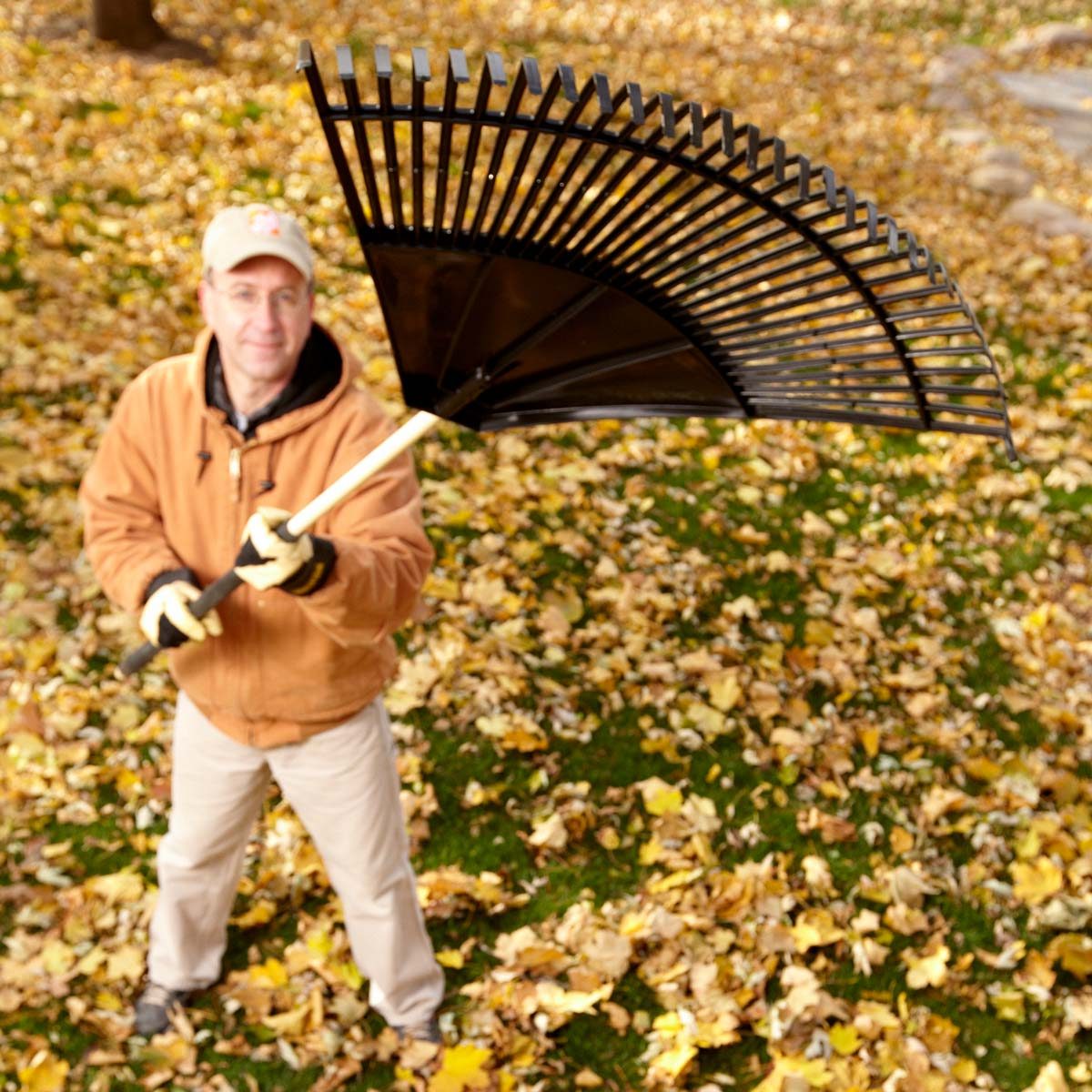
The Right Rake for the Job
The first step in learning how to get rid of leaves is to have the right tools on hand. Lots of Field Editors told us about their favorite rakes. The most popular rakes are beloved just for their size—a big rake makes the job smaller. Most home centers carry rakes up to 30 in. wide.
Other Field Editors swear by “no-clog” rakes—the tines don’t skewer leaves, so you don’t have to stop and unclog the rake. Several manufacturers make them, also in widths up to 30 in.
Hate raking? Opt for a lawn sweeper. Find out what a lawn sweeper is here.
2
/
14
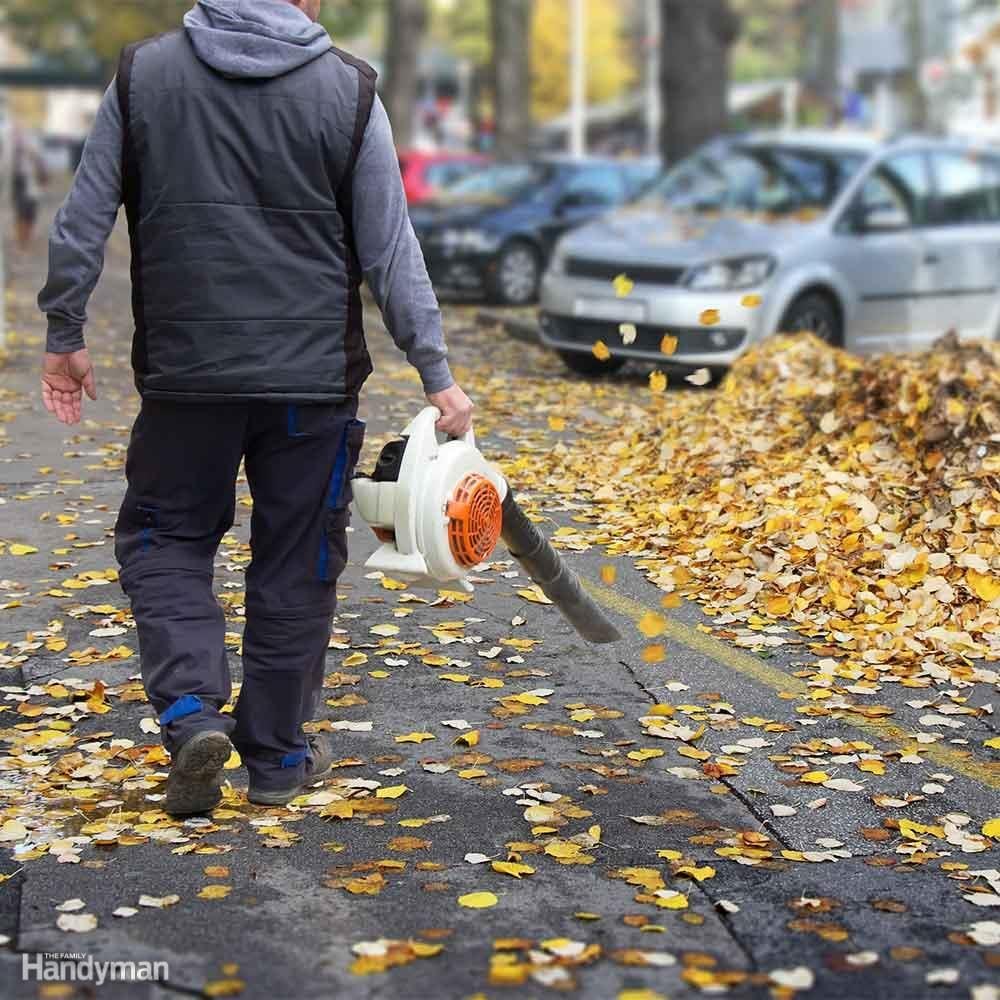
Blower/Vacuum Operating Tips
- Twigs, garden mulch and landscape rocks can damage the impeller, so scout your yard and remove those objects before using the vacuum feature.
- Wear a dust respirator when shredding dry leaves and emptying the shoulder bag—shredding kicks up a lot of dust.
Editor’s Tip: With fall comes the promise of leaves, clumping up on your grass and matting down on your flowerbeds, check out these useful tools that will help you collect leaves.
3
/
14

Mower Leaf Collection
We have a BIG yard and lots of trees. So I bag the leaves with my mower. It does a nice job of shredding the leaves, so they’re ready to become compost or mulch.
– Gary Dowley. Here's what you need to know before buying a leaf mulcher.
4
/
14
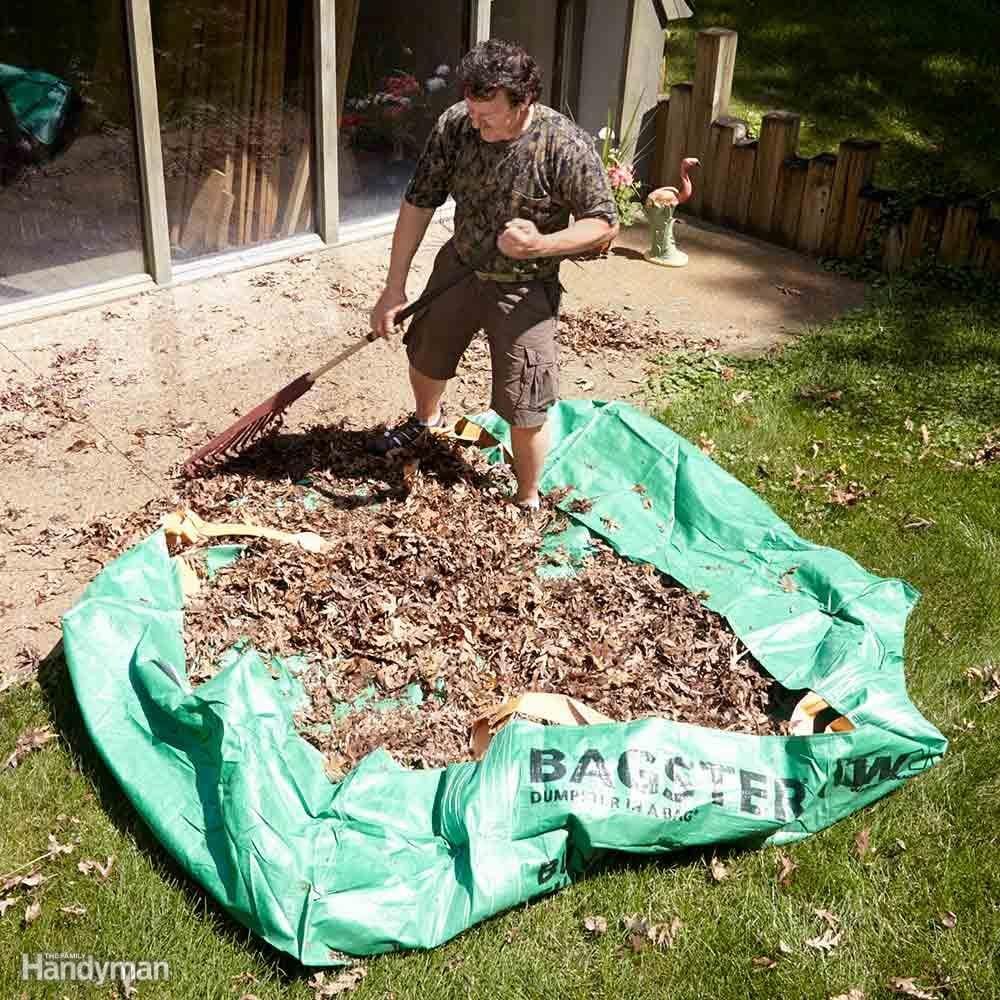
Smarter Leaf Collection
If you have lots of leaves to gather and haul to the compost site, rather than buy and fill a bunch of plastic leaf bags, save lots of time and effort by raking leaves into a Bagster bag from a home center (or Amazon). That's how to get rid of leaves in large loads. Pull the full bag into your trailer, transport the leaves and store the bag for the next season.
Also, check these helpful and best tips for dealing with fall leaves.
5
/
14
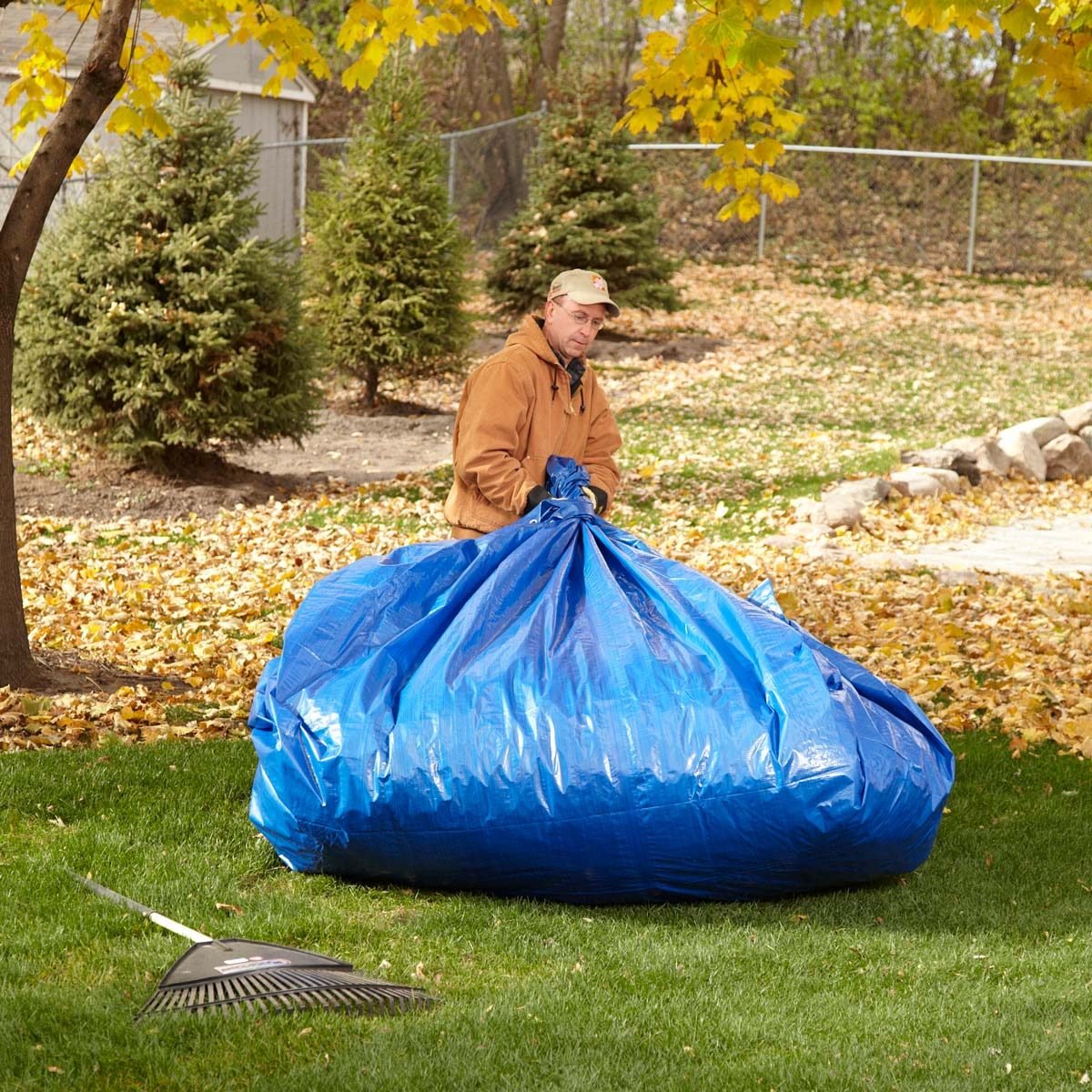
A Tarp Beats a Trailer
Instead of bagging or hauling leaves, rake them onto a tarp that you can drag around your yard. It’s even easier if you get your kids to do it!
6
/
14
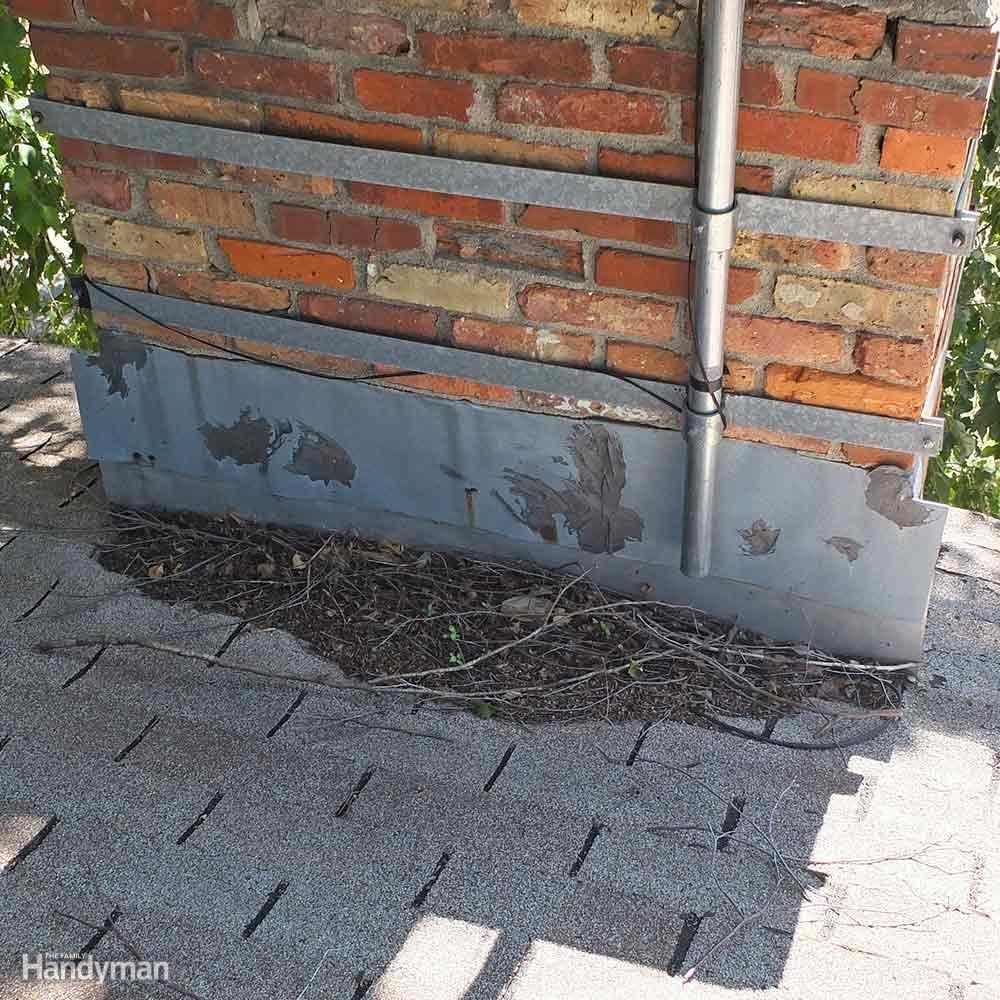
Keep the Roof Clean
Leaves and moss can trap water and cause your roof to deteriorate prematurely. You can blow the leaves off a low-pitched roof with a leaf blower. On steeper roofs, you can pull them off with a broom on an extension pole or, better yet, use a roof rake for leaves. And it's wise to trim back all branches that are close to or touching the shingles.
Chemically treat mold, then sweep it off with a soft broom. A diluted bleach solution will kill mold but could also kill the plants on the ground below, so be careful to spray just enough to soak the mold itself. Specific roof cleaners containing fungicide are also available. Installing zinc strips at the peak of the roof can help keep mold at bay.
Plus: A Home Inspector Reveals the 6 Signs Your House is in Trouble
7
/
14
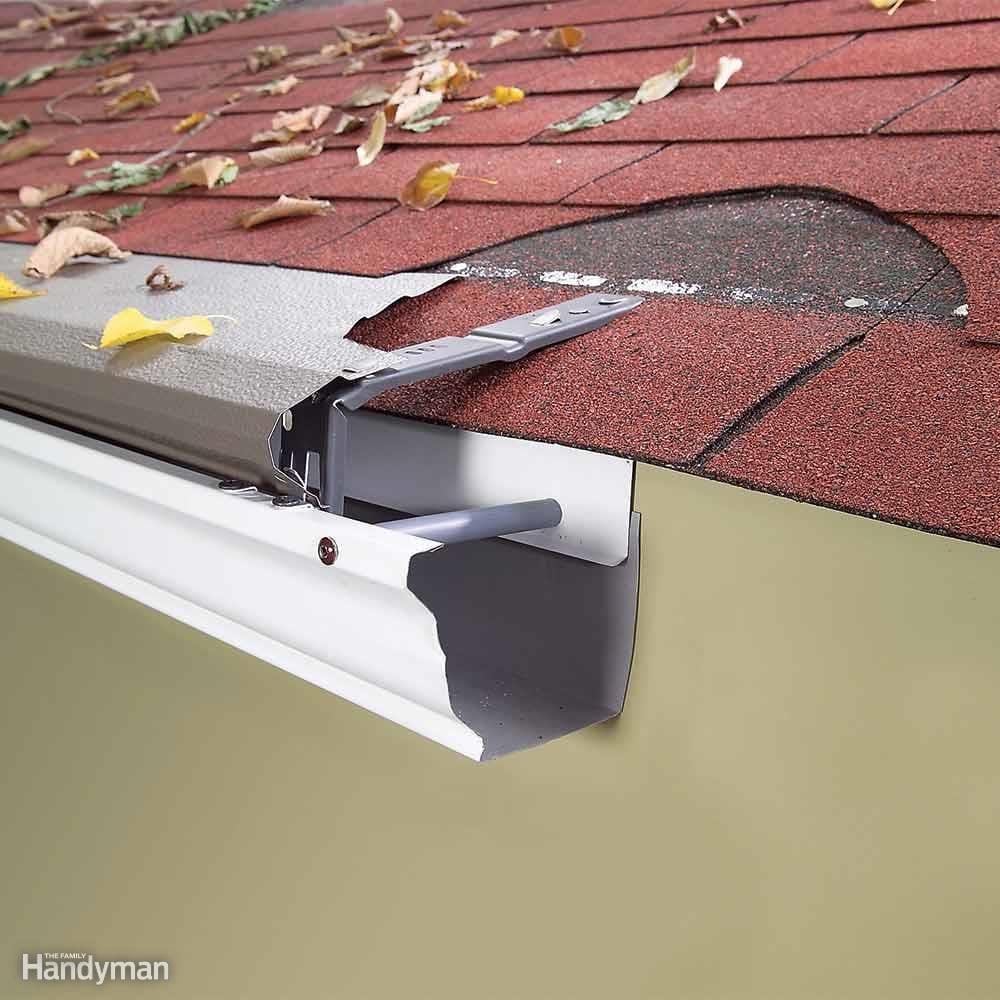
Gutter Guards Work
If you have trouble keeping small leaves and other debris from clogging your gutters, consider installing solid gutter guards. Solid guards, which cover all of the gutter except for a narrow crack to let the water through, do work well. The lip on the guards relies on surface tension to draw the water down into the gutter, while the solid covering deflects leaves and other debris that would otherwise drop in.
The guards work on every type of gutter, except plastic “C” shapes. Since the guards fit over the gutter rather than inside, they'll cover most standard-size gutters. They're typically attached to the gutter with brackets, with the upper edge slid under the lower shingles.
Screened gutter guards, which are much less expensive and available at home centers, don't work as well. They'll keep out most leaves, but you can expect smaller debris, such as seeds and pine needles, to get through. Screens also make gutter cleaning more difficult, because you have to move them aside to get at the debris. However, in some cases they may be all you need. Looking for more options? Try using leaf filters for gutters.
8
/
14
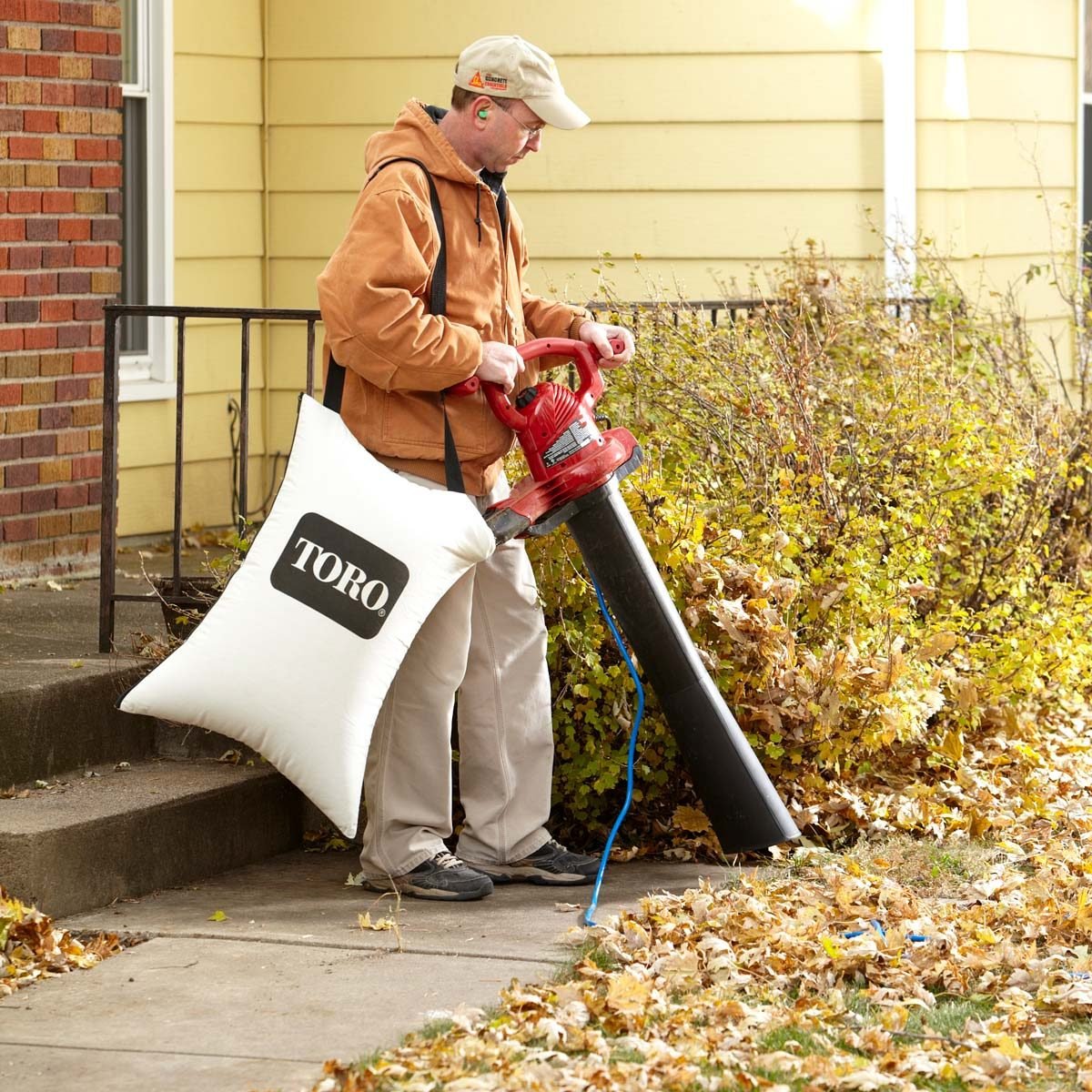
How to Get Rid of Leaves with a Yard Vac
A leaf blower/vacuum sucks up leaves fast, especially around shrubs, in flower beds and in other hard-to-rake areas. You might think that the bag would need to be emptied every five minutes, but the yard work vac minces the leaves and packs a mountain of them into just a few bags.
9
/
14
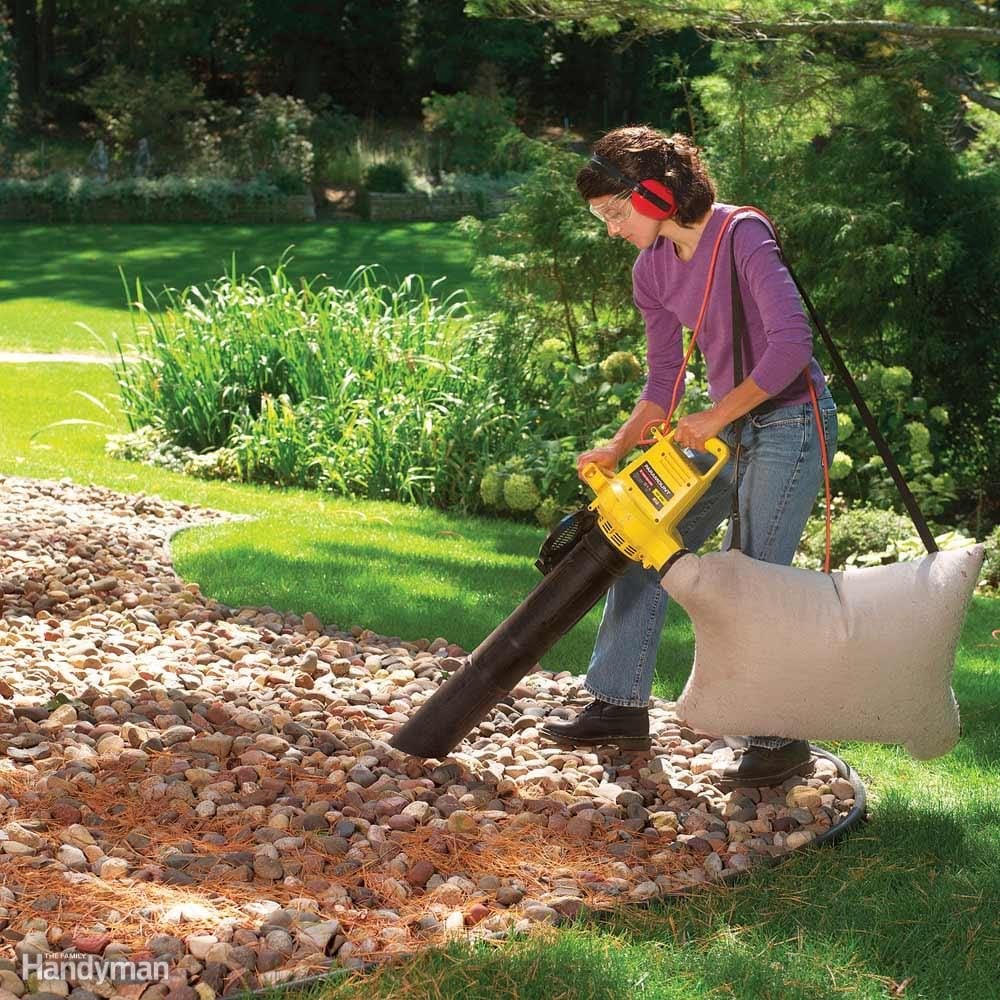
How Do I Keep My Stone Mulch Clean?
You'll have to pull weeds occasionally, but the main problems are leaves and other debris from trees and shrubs that clutter the appearance. The easiest way to remove debris is to suck it up or blow it away with a leaf vacuum. Stone placed directly under a tree is virtually impossible to keep clean. Better to choose organic mulch, because the tree debris will blend in.
Here is how to use a leaf blower properly!
10
/
14
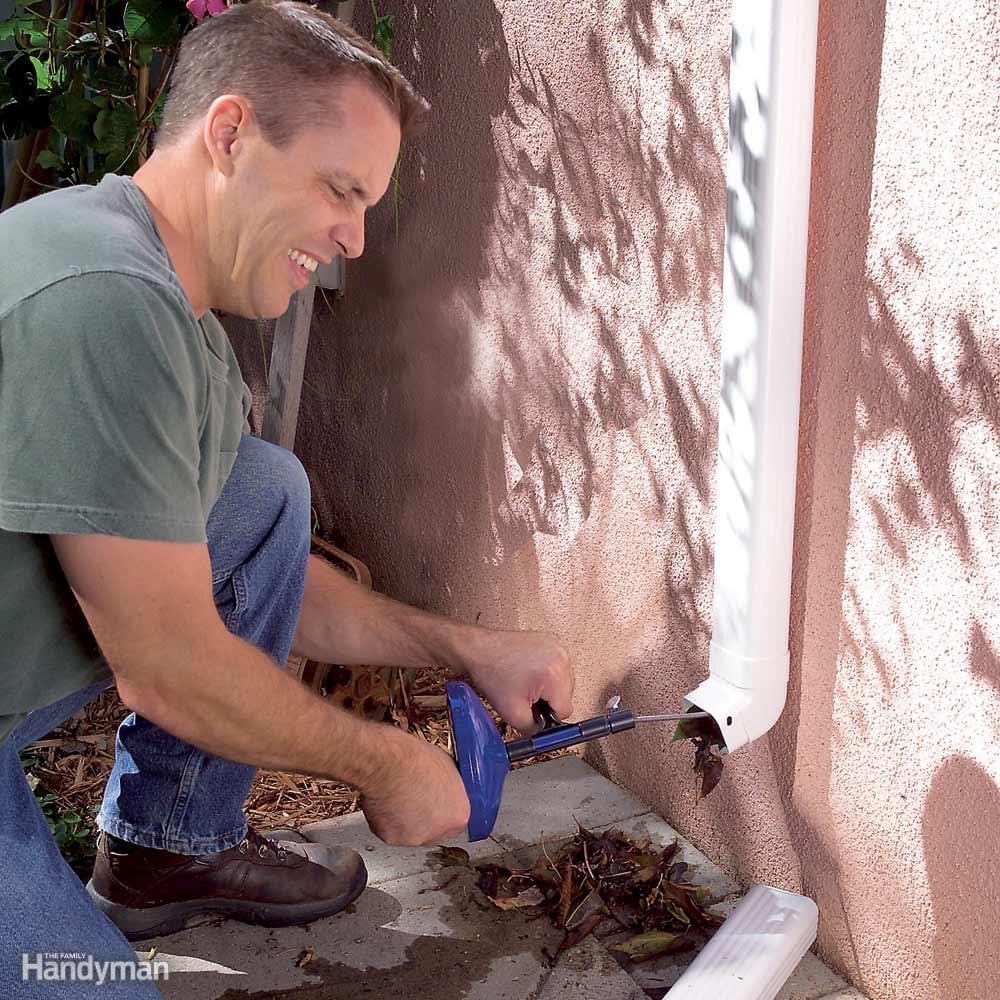
Gutter Spouts
This is an ongoing fall chore that you shouldn't overlook — clean all those wet autumn leaves from gutter spouts before the blockages damage your gutters. Your plumber's snake is a great tool for pulling clumps of wet leaves out of clogged downspouts.
11
/
14
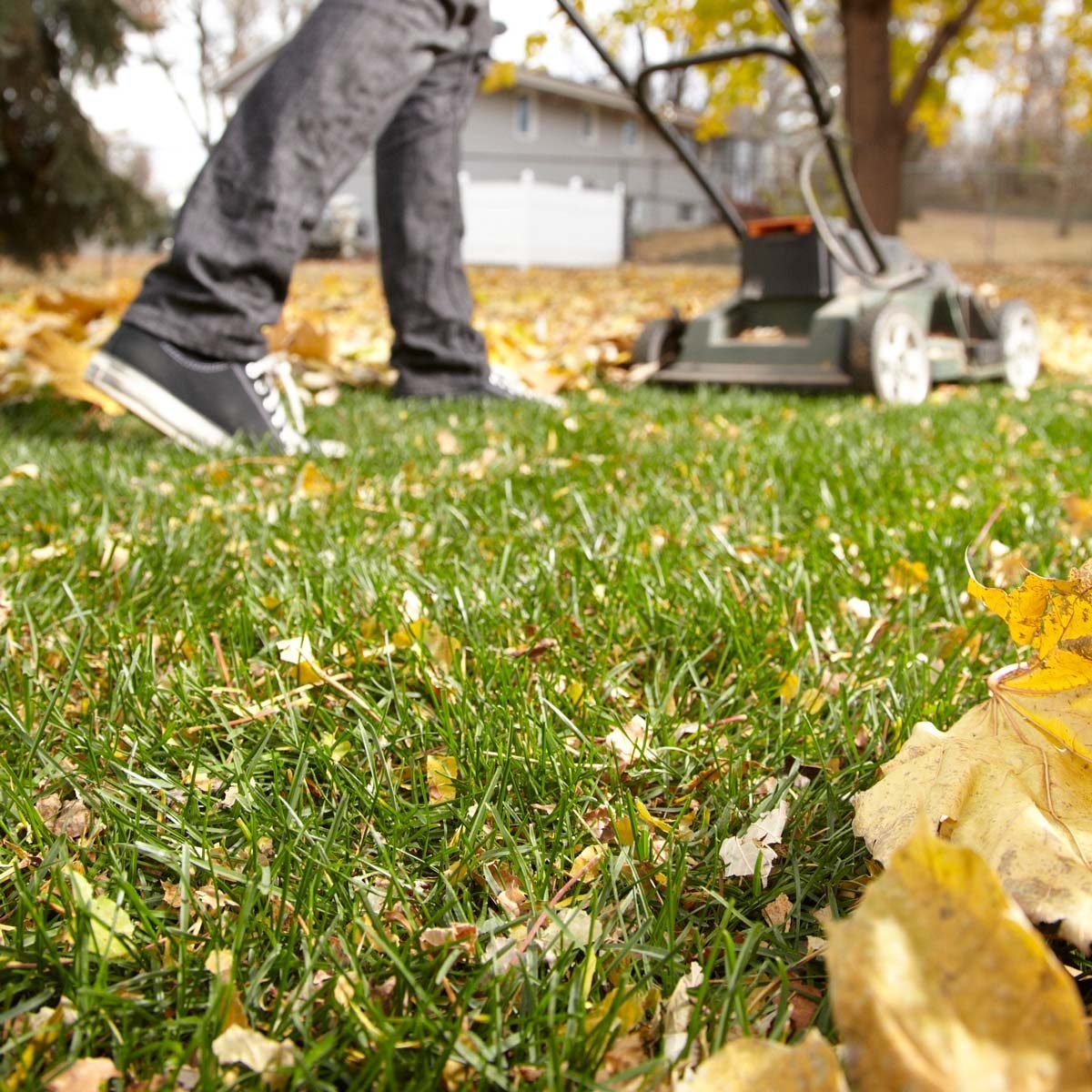
Fall Grass Lawn Fertilizer
If you're not a fan of raking leaves, then consider investing in a mulching mower. A mulching mower shreds leaves into tiny flakes that settle into the fall grass and decompose into natural fertilizer. You might have to go over some areas two or three times to completely chop up the leaves. Still, it’s fast, easy and it makes the grass happy — and there's no raking involved!
12
/
14
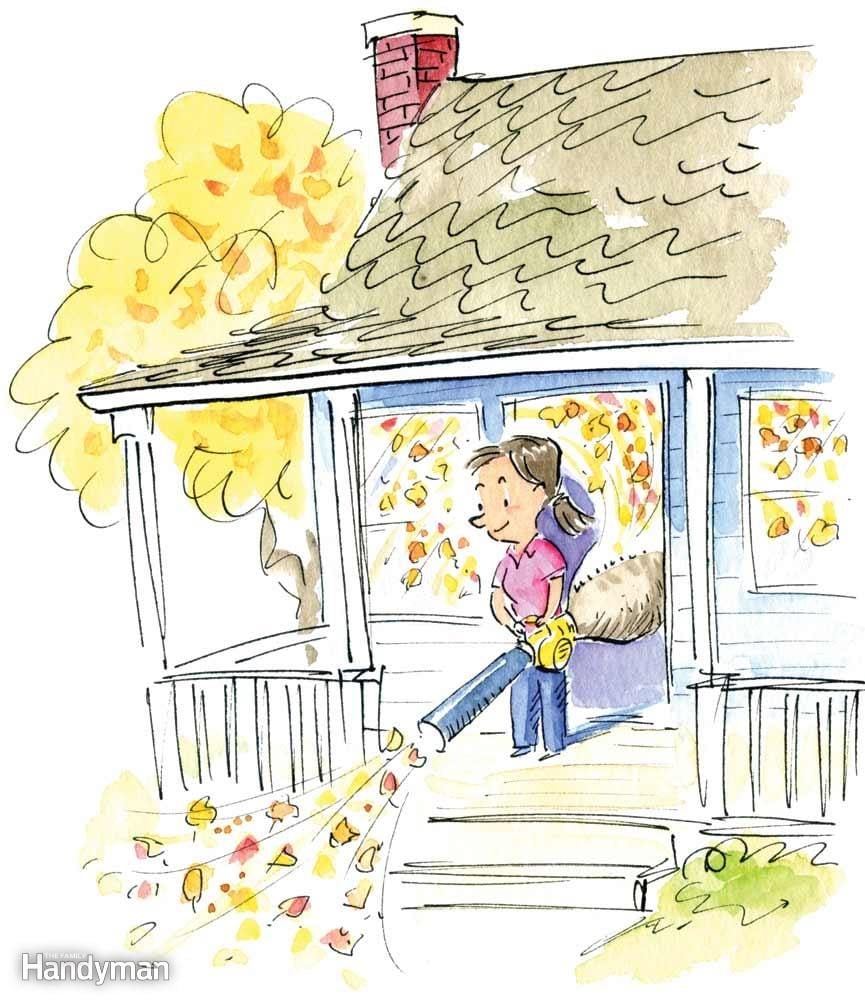
Blower-Bag Bungle
I was house-sitting for friends who have several huge trees in their yard, and I decided to take on the leaf cleanup. My dad's new leaf blower/vacuum seemed like just the right tool to suck up the leaves.
Leaves had collected on a porch off the kitchen, so I looked for an outlet, found one just inside the doorway and started vacuuming. The blower/vac sucked up the pile of leaves instantly. Then I caught something out of the corner of my eye: Mulched leaves were flying through the kitchen like confetti. I had forgotten to zip up the bag before starting the machine. I could only clean up the mess, laugh and swear never to tell anyone.
13
/
14
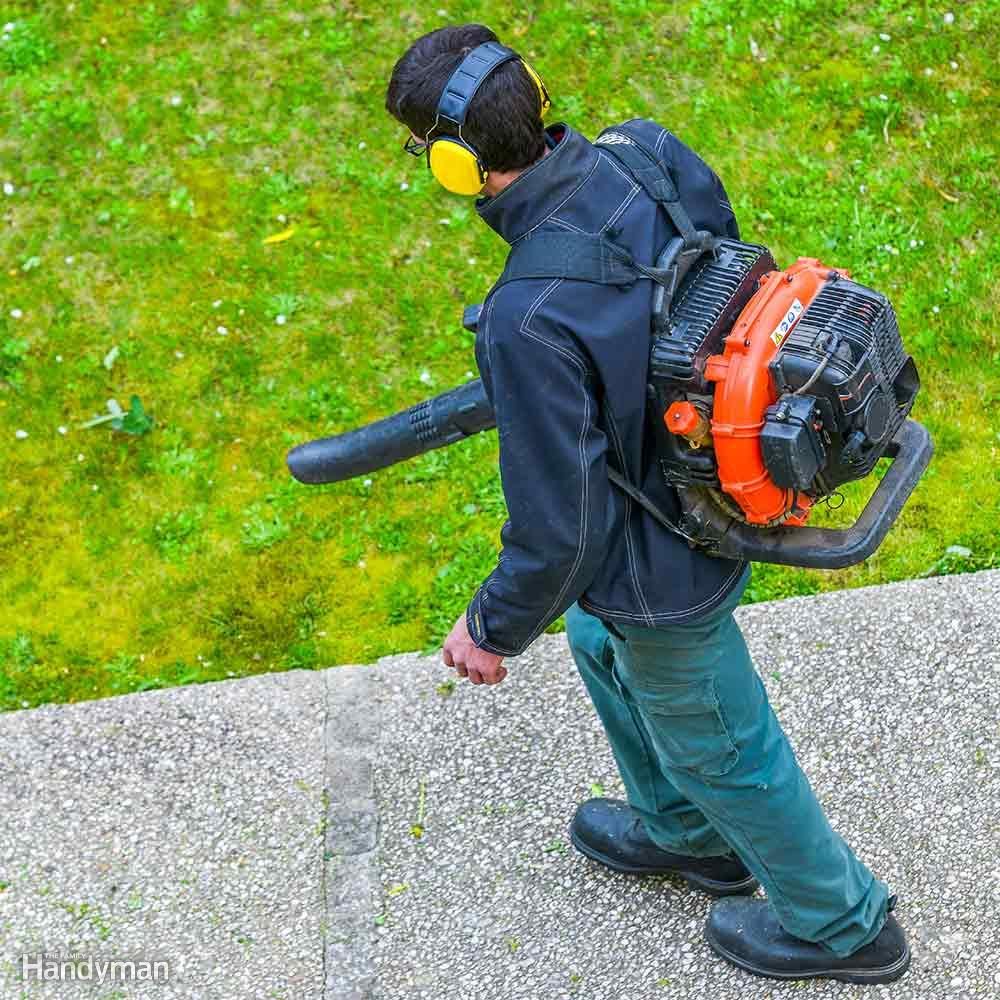
Leaf Blower Safety Tips
- Wear leather gloves to decrease vibration-induced hand and finger numbness and tingling.
- Wear hearing protection. Newer leaf blowers are usually rated below 75 decibels, but that's based on the noise level 50 ft. away from the machine. The noise level right at the machine can easily approach 100 decibels — high enough to cause permanent hearing loss.
- Wear eye protection. Leaf blowers kick up dust, dirt and rocks.
- Let the machine cool for 15 minutes before refueling. Heat from a hot engine can ignite gas vapors as you fill the tank.
14
/
14
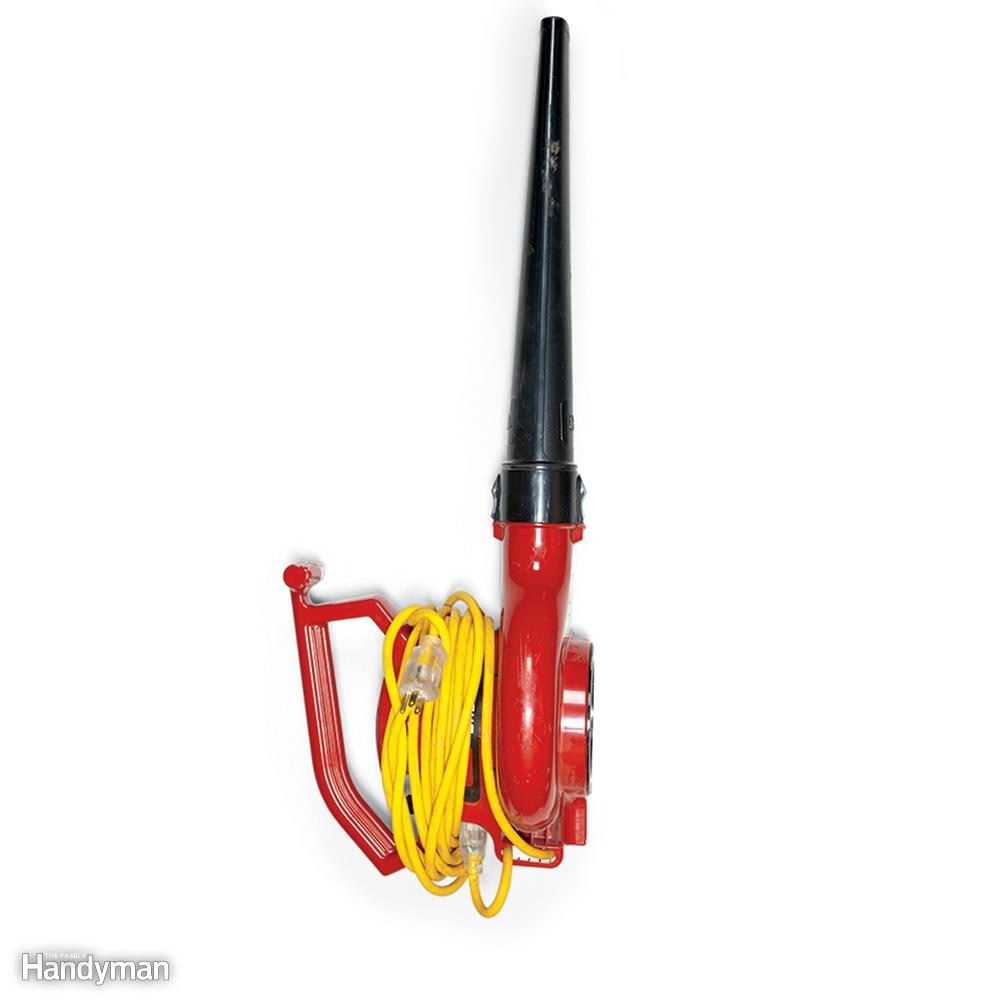
Onboard Leaf Blower Cord
The handles on most electric leaf blowers provide a perfect reel for the cord. Buy a cord that's long enough to reach anywhere in your yard and unroll as much cord as you need, when you need it.